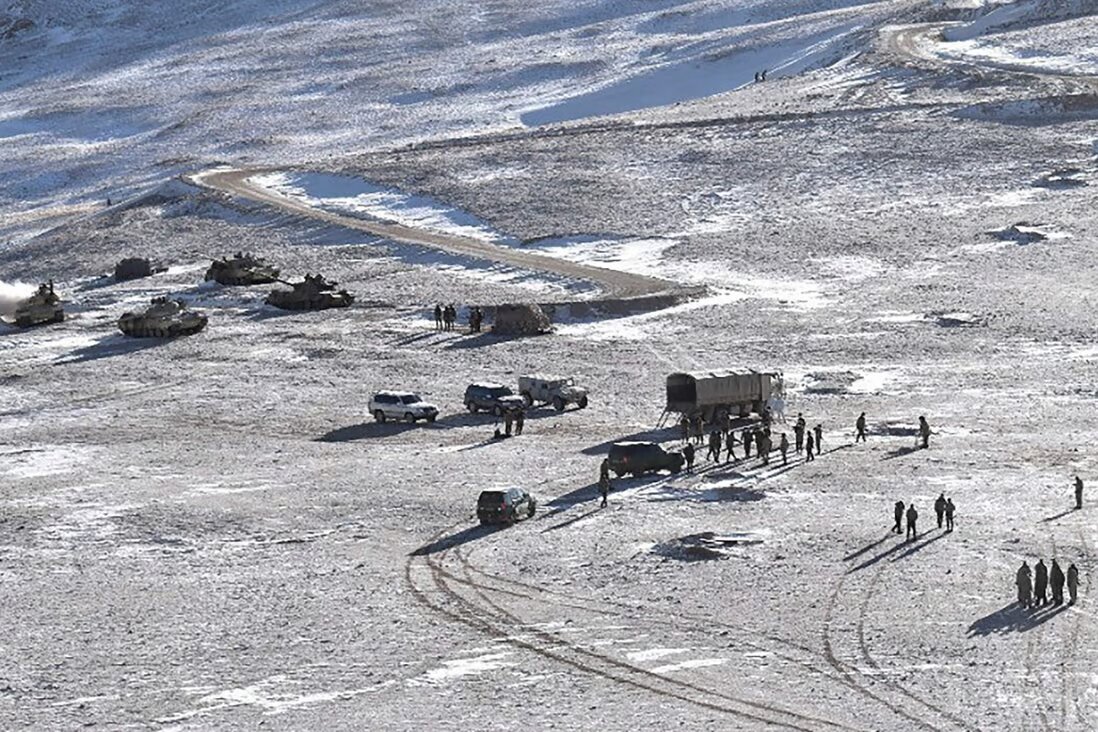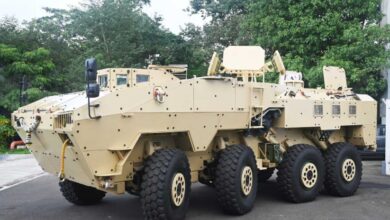China’s Air Power Expansion Along LAC Exposed In Latest Satellite Images

- The ongoing construction work and large and varied deployments at these sites, such as the use of unmanned aerial vehicles (UAVs) and advanced aircraft
- China can hide their deployments or lack of deployments at these forward airbases better if the planes are hidden.
Since 2020, China has built more airstrips along the Line of Actual Control (LAC). An study of satellite images shows that this expansion has made the military stronger, allowing for a wider range of operations and giving them a way to counter India’s relative strengths in certain areas.
According to a story by HT, the situation on the ground has changed a lot since the military standoff on the Line of Actual Control (LAC) began in May 2020. China has built a lot more airports, helipads, railroad facilities, missile sites, roads, and bridges. The main goals of these changes are to make it easier to move troops quickly and to give the army more attacking options.
China has made big changes to airfields in Hotan, Ngari Gunsa, and Lhasa, which can be seen in exclusive satellite photos.
These expansions include building new runways, shelters for combat jets that are built to be strong and safe, and more structures for support and military activities.
The three Chinese airfields chosen for study were chosen because they were strategically placed near important areas on the Indian side and because they were actively taking part in operations during the standoff between China and India. Relationships between the two countries are at their worst point in the last 60 years because of this standoff.
In June 2020, there was a fierce fight in Galwan Valley that killed 20 Indian soldiers and an unknown number of Chinese troops. This was the first time in 45 years that someone died along the Line of Actual Control (LAC).
Indian officials chose not to say anything about the findings.
But India has told China over and over again this year, both in bilateral meetings and at international gatherings, how important it is to get things back to normal along the LAC in order to keep regular and healthy ties between the two countries.
The Hotan airport in southwestern Xinjiang has not grown since 2002. It is about 400 km from Leh, which is the capital of Ladakh in India. A satellite image taken in June 2020 showed that there was no building or development going on near the airport, but that there was already an aircraft apron where fighter jets were parked.
In the Tibet Autonomous Region, there is an airfield called Ngari Gunsa. It is about 200 km from Pangong Lake, where Indian and Chinese troops have fought many times. The Chinese side is building a very important bridge in that area right now. The Ngari Gunsa runway opened in 2010, and after the Doklam standoff in 2017, it got bigger. During that time, the airport was home to fighter jets.
At Ngari Gunsa airfield, a satellite picture taken in June 2020 showed only one airplane ramp with fighter jets. But a later picture from May of this year shows important changes, such as the building of a new track and improvements to the runway.
Also, at least 16 new hardened aircraft shelters have been built, as well as new buildings to support military activities and aircraft. UAVs can also be seen taking off and landing at this airport. As a logistics hub for Chinese troops, Ngari Gunsa has been very important. It has been a key link between areas south of Aksai Chin and deployments deeper in Tibet.
Since the beginning, the airport in Lhasa, the capital of the Tibet Autonomous Region, has been used for both commercial and military purposes. Even though it is not in the western part of the LAC, it is less than 250 kilometers (km) in a straight line from Tawang, which is very important to Chinese rights in the eastern part of the LAC.
In May 2020, a satellite picture showed that battle jets were parked at the Lhasa airport on an existing aircraft apron. But a picture from May of this year showed that work was still going on, including the building of a new runway and apron. Notably, at least 30 new protected aircraft shelters have been built, and new support buildings have also been put up.
Satellite images have also shown that underground buildings have been built south of the Lhasa airfield over the past few years. Satellites have also seen a radar and electronic warfare unit, as well as an air defense unit, near the airport.
Damien Symon, a geo-intelligence researcher at The Intel Lab, says that the improvements seen at these three airfields and other places near the border show that China’s strategic goal is to improve its military capabilities to counterbalance India’s advantages in the area.
“The ongoing construction work and large and varied deployments at these sites, such as the use of unmanned aerial vehicles (UAVs) and advanced aircraft, show that China is trying to improve its offensive capabilities, especially since the border with India is so busy,” he said.
“It is important to realize that these changes fundamentally change the way air warfare works, increasing China’s operational range and making it harder for India to use its deterrence strategies,” Symon said.
Air Vice Marshal Manmohan Bahadur, who served in the Ladakh region and is now retired, said that China has spent the last three years coming up with plans to counter the benefits that the Indian Air Force (IAF) has in the area.
“Because of these things, the IAF could bring the war to them. Most Indian airbases are near the foothills, so planes could take off with a bigger load of weapons, Bahadur said.
Lieutenant General Rakesh Sharma, who is now retired, used to lead the Ladakh corps, which was in charge of Kargil, the Siachen glacier, and eastern Ladakh. He says that many Chinese airfields along the Line of Actual Control (LAC) did not have hardened aircraft shelters, long runways, or places to store ammunition at first.
“They are no longer having this trouble. Sharma said, “Their runways are longer, the planes are safe, and they can take off with more weight on board.”
“Everything is part of a plan. “There are rumors that the Chinese have put a lot of cruise missiles in this area that can hit targets up to 2,000 km away,” he said.
Sim Tack, a geo-intelligence analyst at Force Analysis, says that the fact that each Chinese airbase has hardened shelters could make it harder for India to stop or fight against Chinese air power. Tack said that these shelters not only make it harder to hit Chinese planes in the disputed areas, but they also hide the fact that fighter jets are there. China can hide their deployments or lack of deployments at these forward airbases better if the planes are hidden.
This could mean that India has to spend more money to figure out how strong Chinese air power is in the area, he said.
Bahadur said that the Indian side relied on “deterrence by punishment,” and that the new and larger airfields and air defense weapons would make this less effective.
Sharma says that the Chinese facilities have changed the way air battles are fought in the area in a big way.
“Chinese jets can fly over Gilgit-Baltistan from Kashgar, which is in Xinjiang. Srinagar is also in their range. He also said, “The airfields in Tibet Autonomous Region are a bonus that has taken away some of India’s advantage.”
India and China have had over twenty-five rounds of military and diplomatic talks, but they haven’t been able to solve all of their disagreements in the Ladakh region of the LAC.
External Affairs Minister S. Jaishankar has said that peace and quiet along the border are necessary for normalizing ties between the two countries.







Facebook Comments